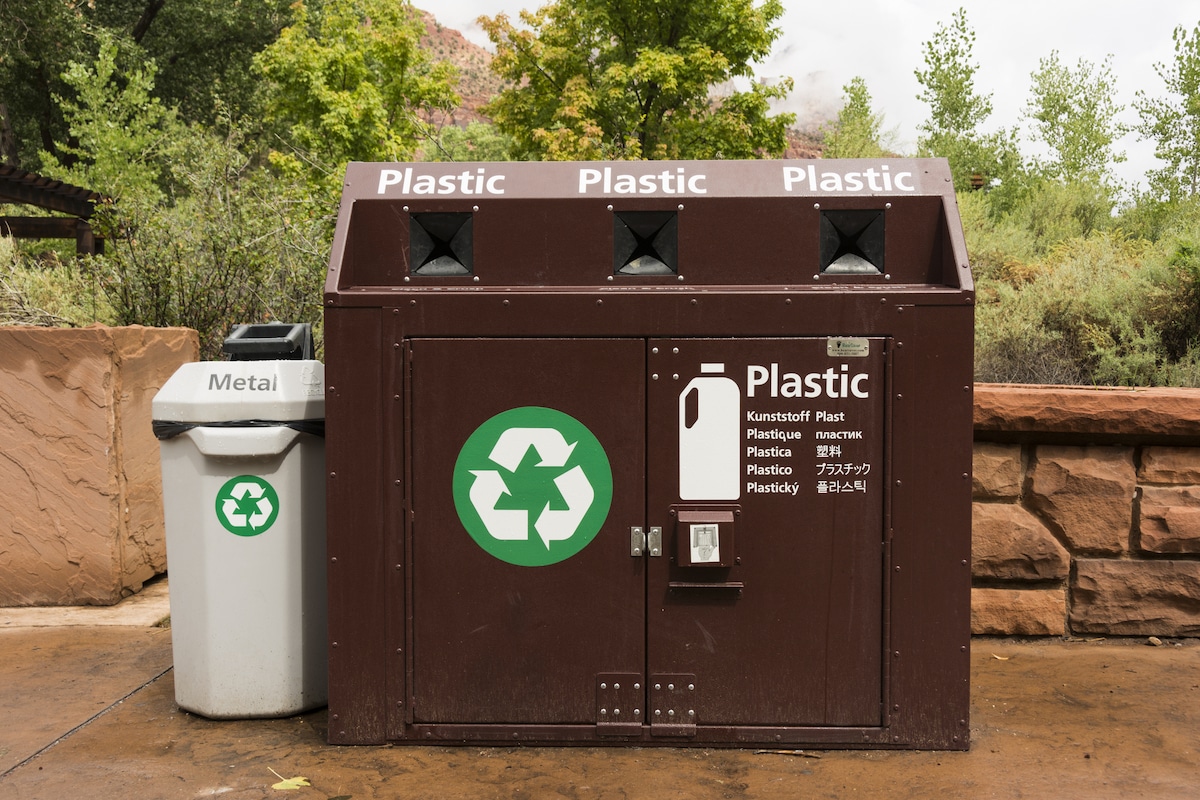U.S. Considers Replacing ‘Chasing Arrows’ Recycling Symbol

 Why you can trust us
Why you can trust us
Founded in 2005 as an Ohio-based environmental newspaper, EcoWatch is a digital platform dedicated to publishing quality, science-based content on environmental issues, causes, and solutions.
Since 1970, the “chasing arrows” symbol has been an iconic marker of recyclability. But now, President Joe Biden’s administration is considering if the symbol has become misleading.
The symbol was first designed by Gary Anderson, who was studying at University of Southern California and submitted the logo for the International Design Conference in 1970. It was designed to address Earth Day and the growing awareness of sustainability and caring for the environment.
The logo features three arrows “chasing” one another in a triangular loop. The first arrow is meant to represent items being collected for recycling, the second arrow represents the manufacturing of recyclable materials into new materials, and the third loop represents the consumption of the materials once again.
But today, the symbol is used on many materials that are not easily or commonly recycled.
As the U.S. Federal Trade Commission (FTC) considers updating its Green Guides for the first time in over a decade to address greenwashing, the U.S. Environmental Protection Agency (EPA) has submitted a letter to comment on greenwashing and current recycling systems within the country. It noted that part of the necessary improvements to recycling include clearer labels that are more transparent and accurate to consumers.
“Plastics are a significant problem that need to be addressed. Categorizing plastics by resin identification code coupled with chasing arrow symbols does not accurately represent recyclability as many plastics (especially 3-7) do not have end markets and are not financially viable to recycle,” the EPA said in its letter to the FTC.
The EPA has noted that the arrow symbols, combined with the resin numbers on plastics, have been a major source of confusion for consumers, with many people reaching out for clarification on what can and cannot be recycled, as reported by The Guardian.
In the U.S., only 23.6% of all generated municipal solid waste is recycled, according to the EPA. While plastic recycling was around 8.7% in 2018, a 2022 report from Beyond Plastics found that post-consumer plastic recycling rates were actually only around 5% to 6%.
“The plastics industry must stop lying to the public about plastics recycling. It does not work, it never will work, and no amount of false advertising will change that. Instead, we need consumer brand companies and governments to adopt policies that reduce the production, usage, and disposal of plastics,” Judith Enck, president of Beyond Plastics and former U.S. EPA regional administrator, said in a statement about the 2022 report.
In recent years, states have already targeted the “chasing arrows” label, with California being the first to restrict the logo on items that are not routinely recycled.
In addition to calling for changes to the recycling symbol, the EPA also recommended that the FTC restrict the use of several terms, including biodegradable and degradable, on products that are typically sent to landfills, recycling facilities or incinerators.
In the letter, the EPA wrote “that products labeled with terms such as degradable, biodegradable, etc., should always provide clear instructions for consumers on how to dispose of the product in a way that it will decompose in a safe and timely manner.”
Subscribe to get exclusive updates in our daily newsletter!
By signing up, you agree to the Terms of Use and Privacy Policy & to receive electronic communications from EcoWatch Media Group, which may include marketing promotions, advertisements and sponsored content.

 233k
233k  41k
41k  Subscribe
Subscribe 



